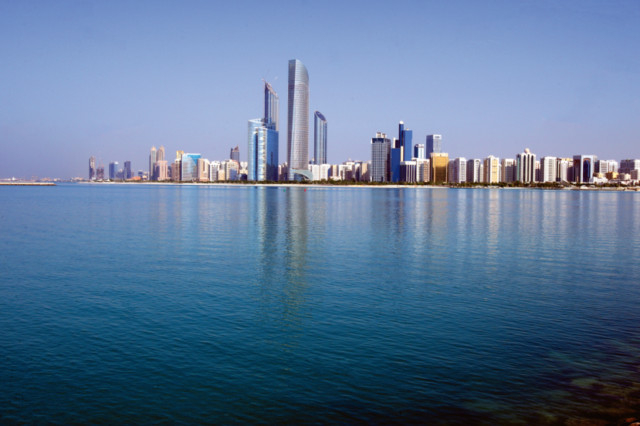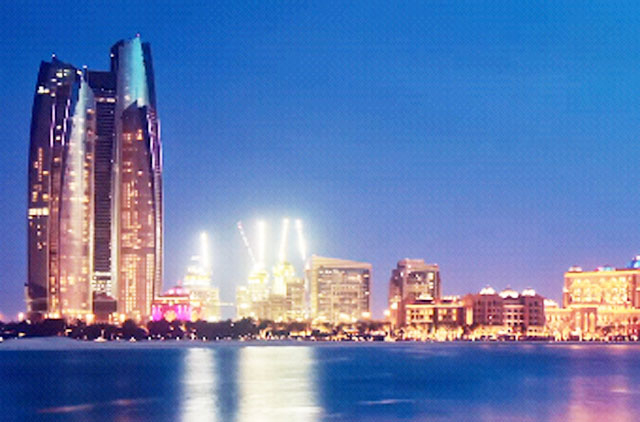London: Fitch Ratings has affirmed Abu Dhabi’s Long-term foreign and local currency Issuer Default Ratings (IDR) at “AA”. The Outlook is stable. The issue ratings on Abu Dhabi’s senior unsecured foreign and local currency bonds have also been affirmed at “AA”. The Short-term foreign currency IDR has been affirmed at “F1+”. The UAE Country Ceiling has been affirmed at “AA+”; this Ceiling also applies to Ras Al Khaimah.
Abu Dhabi’s external sovereign balance sheet is estimated to be the second-strongest of all countries rated by Fitch, behind Kuwait (AA/Stable). Sovereign net foreign assets are estimated to have increased to 178 per cent of GDP at-end 2013, from 151 per cent of GDP one year earlier, sufficient to cover five years of government spending. The repayment of a Eurobond in early 2014 has cut central government external debt to 0.6 per cent of GDP. Sovereign net foreign assets are conservatively forecast to remain around 170 per cent of GDP by end-2016.
Abu Dhabi tends to record large fiscal and current account surpluses. Although fiscal spending rose by around 3 per cent of GDP and revenue fell slightly in 2013, a near-double digit fiscal surplus was recorded once Abu Dhabi National Oil Company dividends and Abu Dhabi Investment Authority (ADIA) investment income are included. Falling oil revenues, in line with Fitch’s price forecasts (see Key Assumptions below), will narrow the surplus each year to 2016. The current account surplus is estimated by Fitch to fall to 7.6 per cent of GDP in 2016 from 16.6 per cent of GDP in 2013.
Real GDP growth is well in excess of peers, at 5.2 per cent in 2013. Non-oil growth was 7.4 per cent, the fastest in seven years, and has averaged 7.9 per cent over the past decade. Non-oil growth should remain buoyant over the forecast period, supported by project spending, a benign external environment and positive domestic sentiment.
Contingent liabilities
Debt of government-related enterprises (GREs) and state-owned enterprises (SOEs) fell to 35.4 per cent of GDP in 2013 (around one-quarter of this is non-recourse), reflecting the authorities’ commitment to containing indebtedness. Explicit contingent liabilities are clearly delineated and GREs and SOEs borrowing plans are controlled by the authorities. Fitch believes Abu Dhabi’s ability to support its GREs and SOEs is not in question. Potential contingent liabilities are unlikely to be material compared with Abu Dhabi’s assets.
Bank performance has improved in line with the strengthening of the local and Dubai economies. NPLs of Abu Dhabi banks have declined to a five-year low and provisioning is at a six-year high, although asset quality issues remain. Capital adequacy is high, at 17.8 per cent at end-March 2014. Fitch does not consider that surging residential real estate prices pose a serious risk to banks. Unlike the 2008 boom, the current run-up in prices is not reliant on leverage and is backed by stronger fundamentals. The authorities are also more attuned to the risks from rising house prices. Rising rents and a buoyant economy are pushing up inflation, which is forecast to average 5 per cent in 2016.
The economy is heavily dependent on oil, which accounts for around 50 per cent of GDP and the bulk of fiscal and external revenues. Spending of oil revenues is a key driver of the non-oil economy. However, oil production per capita is one of the highest in the world and supports high GDP per capita. Proven oil reserves are large, production costs are low and production capacity and downstream facilities are being expanded.
Governance indicators
Structural indicators are mixed relative to peers. GDP per capita is the second-highest of all Fitch-rated sovereigns, but human development indicators are below the median. The World Bank Doing Business score and most World Bank governance indicators (last updated with 2012 data in September 2013) have improved in recent years and are in line with the peer median, although voice and accountability is weak. The World Bank ranks political stability above the peer median and the political scene is stable. Fitch considers geopolitical risks to be elevated compared with some ‘AA’ rated peers.
Economy policymaking tools, primarily at the federal level, are weak compared with peers, although steps to develop the policy framework continue. A macro-fiscal unit has been established at the Department of Finance and use of macro-prudential tools has increased.
The Outlook is Stable. Consequently, Fitch’s sensitivity analysis does not currently anticipate developments with a high likelihood of leading to a rating change. The main factors that, individually or collectively, could lead to positive rating action will include Addressing deficiencies in structural indicators and strengthening policymaking institutions, relative to peers.
The main factors that, individually or collectively, could lead to negative rating action are:
Fitch forecasts Brent crude to average $108/b (Dh396) in 2014, $100/b in 2015 and $95/b in 2016. Abu Dhabi could likely tolerate much lower prices over the forecast period without facing undue pressure on its rating.
No major change is expected in ADIA’s relationship with and use by the Emirate of Abu Dhabi or in its investment guidelines.
Fitch assumes that regional geopolitical conflicts continue, but will not have a direct material negative impact on Abu Dhabi or its ability to trade.














